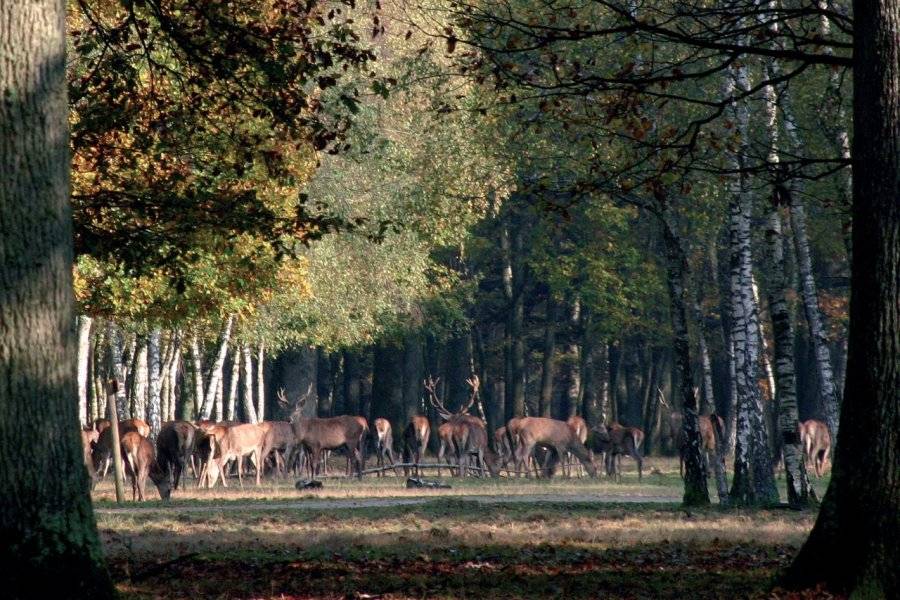FONTAINEBLEAU FOREST
Go there and contact
The forest extends over a huge area, allowing you to discover diverse and original landscapes while enjoying the great outdoors.
France's largest forest, the world's first protected natural area, recognized by Unesco as a biosphere reserve, this marvel of biodiversity covers 25,000 hectares. This immense area attracts 13 million visitors a year, who come to stroll and discover the diverse and original landscapes, and of course, a biotope like no other. If the beautiful town of Fontainebleau and its château are at its heart, it's impossible to return to Fontainebleau without enjoying this forest, especially as it can be reached from numerous towns and villages, such as Milly-la-Forêt, Barbizon, Fontainebleau, Bourron-Marlotte, Orsay... Here are a few ideas of things to do, accompanied by the right people:
Climbing, of course! "Bleau" is an introductory route to mountaineering (since 1874, the French Alpine Club has used the massif as a training ground), climbing, rock-climbing and rock-climbing, depending on your level and style. Since 1947, marked routes have been set up to take you from numbered sandstone crag to numbered sandstone crag, coloured according to difficulty level: white (children), yellow (easy), orange (fairly difficult), blue (difficult), red (very difficult), black or white (extremely difficult). At the very least, you'll need climbing shoes (there are rental trucks at the entrances to well-known sites, like Les Trois pignons, for those who forget), your "pof" (a bag of chalk to help you stick to the rock), and a mat (a rough rag, piece of carpet or small doormat) to wipe your feet before climbing a rock and protect you from slips, as well as to protect the fragile sandstone, which is sometimes too polished by climbers to be honest. On fine weekends, some sites are crowded.
Groups of initiates and a wealth of information on how not to climb foolishly or dangerously at: http://bleau.info ; www.grimporama.com ; http://circuitdes25bosses.fr
Ecotourism, of course! In May 2011, the Seine-et-Marne tourism development agency opened the first ecotourism center in the Paris region, on the Franchard site. Here, visitors are provided with information to prevent excessive human impact on the site. The center organizes exhibitions, events and "Well-being" days featuring original naturalist activities combining discovery of the biotope with workshops on flavors, photography or yoga..
From mid-November to March: activities and events by prior arrangement (01 60 71 11 08). Outside opening hours, Seine-et-Marne Tourisme (01 60 39 60 39).
Harvest the Phytolaque! The phytolac, or American grape, is classified as a plant pest by the IUCN (International Union for Conservation of Nature), because when this plant multiplies through the spread of its fruit by birds, nothing grows at its feet. Children beware: its fruits are poisonous! Uprooting campaigns are organized, with information and precautionary measures (don't eat it, wear gloves, etc.).
If you feel like it, visit this website: http://phytolaque.wifeo.com
Mushroom picking. Mycology is a great way to learn while out and about (as a family), and to enjoy your own mushroom picking. But beware: mushrooms are best learned from professionals, such as the local mycological societies who offer educational mushroom-picking courses: www.mycodb.fr/societe.php ? dep=IDF
Discover the fauna, flora and geology of the massif. 1,331 hectares of biological reserves classified as Natura 2000 sites. An impressive number of species of birds, reptiles, insects, butterflies, amphibians and plants, some of which are rare and protected... Fontainebleau is a source of continuous research and wonder for naturalists. Learn or train in the natural sciences with :
- the association des naturalistes de la vallée du Loing et du massif de Fontainebleau (ANVL), which organizes ornithological (birds), lichenological (lichens), botanical, entomological (insects), archaeological, mycological (mushrooms) and geological outings in the Fontainebleau massif throughout the year. Information, membership and calendar at http://anvl.fr
- The ONF (Office national des forêts) forest initiation center offers year-round activities for schoolchildren, students and adults (works councils): Information and booking ONF - Centre d'initiation à la forêt (01 64 22 72 59). E-mail: [email protected]
- Nature et Découvertes Club: www.natureetdecouvertes.com/nos-activites-en-ile-de-france
Hiking. On foot, Nordic walking, horseback, bike, rollerblades... Solo, duo, family, stroller, disabled, etc. There are plenty of ways to hike in Fontainebleau, where several GR trails run along 1,600 km of forest roads, including 300 km of signposted footpaths.
Lazing about. After a stroll with the kids, or a climb with juniors over the age of six, you can head off to the Caverne des Brigands (by Barbizon), to the edge of the ponds, to bask near Milly-la-Forêt or Barbizon, or to frolic at the Cabaret-Masson near the Solle racecourse (between Melun and Fontainebleau) on the D606. But in Fontainebleau, everything is good and beautiful, as long as you do your homework and take a map, like the IGN Top 25 Forêt de Fontainebleau.
Did you know? This review was written by our professional authors.
Members' reviews on FONTAINEBLEAU FOREST
The ratings and reviews below reflect the subjective opinions of members and not the opinion of The Little Witty.









Une vaste forêt, belle, bien entretenue. Une quantité de balade à faire importante. Et tout cela, pas très loin de Paris.